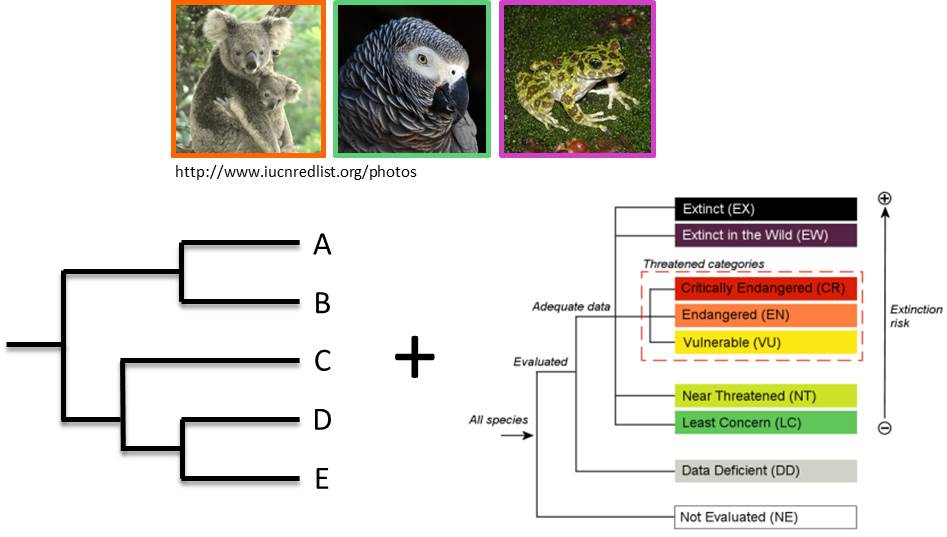HEDGE LEDGE
People involved
Study of new international biodiversity indicators based on phylogenetic originality and the probability of extinction of species: identification of HEDGE and LEDGE species
To select species of interest for which a conservation priority might be given, it has been suggested to give priority to phylogenetically original species, assuming that the phylogenetically original species have rare biological characteristics. For example, in France, the National Biodiversity Observatory (ONB) has included in recent years the indicator "International responsibility of France for the most original species”. The post-doctoral researcher will study two complementary indices: the HEDGE (Steel et al. 2007) and LEDGE (Faith 2015) indices. For a species i of a group of species (e.g. mammals), these indices estimate the difference between the expectation of the phylogenetic diversity of the group after a given period of time (e.g. 50 or 100 years) taking into account the probability of extinction of species i and this same expectation if the probability of extinction of species i was zero (HEDGEi, Steel et al., 2007) or maximum (LEDGEi, Faith 2015). Species with high values of the HEDGE index are thus threatened species contributing greatly to phylogenetic diversity. LEDGE species are currently non-threatened but contribute to phylogenetic diversity as all other species in their lineages are extinct or have a high probability of extinction.
Funding:
Labex BCDIV
Project coordinator: :
Sandrine Pavoine, Boris Leroy
- UMR BOREA
- UMR CESCO

